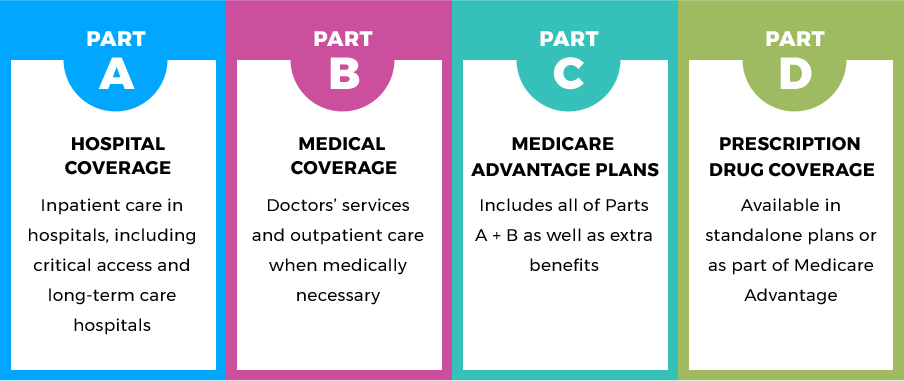

There’s no copayment on days 0 through 60 of any inpatient stay. For example, you may buy into Part A if you haven’t earned enough Social Security work credits. Most people don’t pay a Part A premium, but you might need to in some cases. When you need to use your Part A coverage, however, there are some costs involved. You might hear people discuss Part A as “free.” That’s because most people get Part A without paying a deductible. It’s important to know that costs usually change from year to year. Each part also has its own deductibles and premiums to consider. Your costs for services will depend on which part of Medicare they fall under for coverage. Here is a quick review of what each part covers: Each tier includes different prescriptions and has different copayments. Part D plans split their coverage into levels called tiers. Medicare oversees and regulates Part D plans. Like Medicare Advantage plans, Part D plans are offered by private health insurance companies. Medicare Part D covers your prescription drugs. These all-inclusive Medicare Advantage plans allow you to get all your health services covered in a single plan.

In general, Part B covers services that are either medically necessary or preventive. Medicare Part B covers a range of everyday healthcare services. Part A will pick up all the costs while you’re there, including costs normally covered by parts B or D. Medicare Part A covers the care you receive when you’re admitted to a facility like a hospital or hospice center. When you know which part will cover for the services you need, you’ll also have a better idea of what your costs will be. Knowing what each part of Medicare covers can help you prepare for an appointment or procedure. All four parts each have their own costs, including deductibles, copays, and premiums. Together, parts A and B are often called original Medicare. These plans are also provided through private insurance companies. Part D plans are stand-alone plans that only cover your medications. Medicare Part D is prescription drug coverage. Medicare Advantage plans are offered by private insurance companies and are overseen by Medicare. These plans combine the coverage of parts A and B and aspects of part D into a single plan. Medicare Part C is also called Medicare Advantage. Medicare Part B is medical insurance that covers everyday care needs like doctor’s appointments, urgent care visits, counseling, medical equipment, and preventive care.

It also provides limited coverage for skilled nursing facility care and certain in-home healthcare services. It covers you during short-term inpatient stays in hospitals and for services like hospice. Each part covers different healthcare services you might need.Ĭurrently, the four parts of Medicare are: You’ll typically pay 1.45 percent of your earnings toward Medicare, and your employer will match this amount. Medicare is a federal program that’s funded by taxpayer contributions to the Social Security Administration. Medicare is a health insurance program for people ages 65 and older, as well as those with certain health conditions and disabilities.


 0 kommentar(er)
0 kommentar(er)
